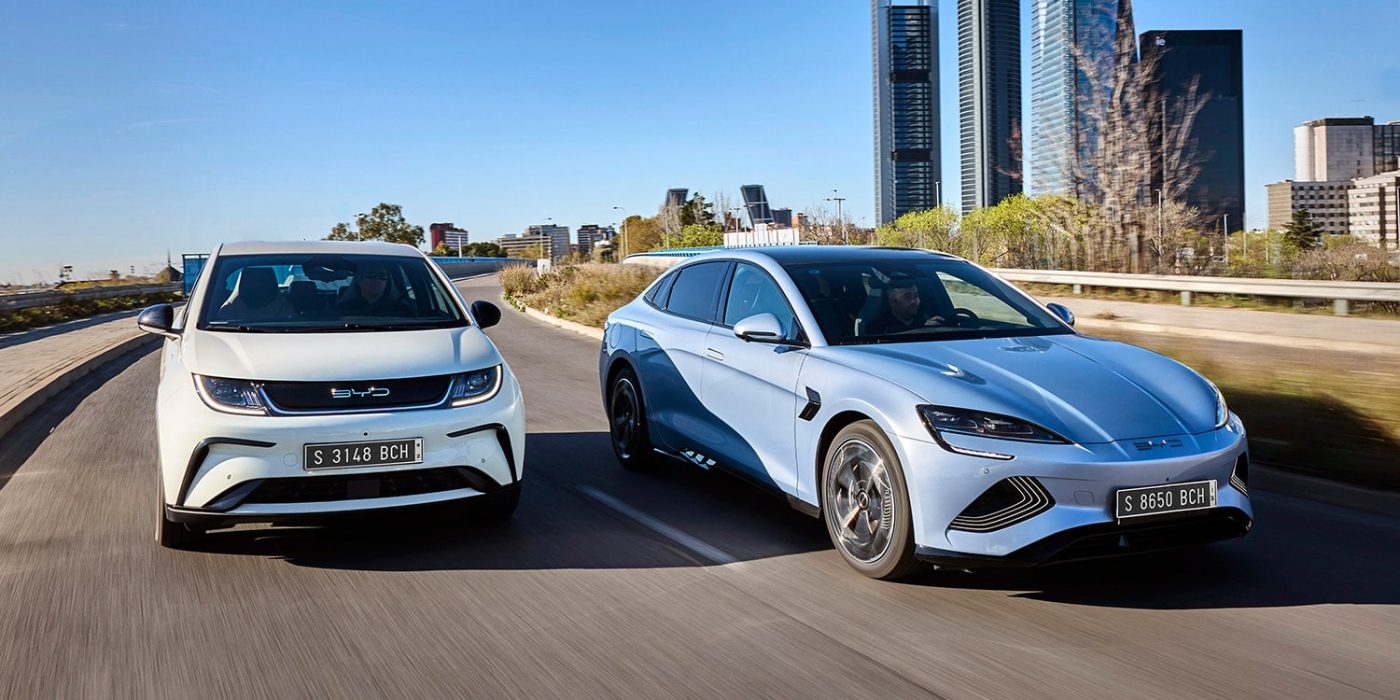BYD showcases six electric vehicles at the IAA 2023
BYD presented its complete range of European electric cars at the IAA Mobility and revealed the full technical specifications of the Seal and Dolphin models. The Denza brand also made its official European debut in Munich.
Staying with BYD, the booth hosts the full range of previously introduced models like the Atto 3, Tang and Han. Relatively new to the European line-up but announced previously are the 800-volt Seal and Dolphin vehicles. BYD released Dolphin prices in Europe in June, targeting markups between 29,990 and 37,740 euros.
Entirely new yet expected to make its IAA debut is the Seal U (for Utility). On show as a preview ahead of its forthcoming release in Europe, the new SUV is positioned in the D-segment and thus one class above the C-segment SUV Atto 3. The Seal U will be launched in Europe in the first half of 2024; BYD has not yet disclosed prices. If the Seal U is counted as a stand-alone model, the BYD range will comprise six electric models in future, including the Han EV, Tang EV, Atto 3, Dolphin, Seal and Seal U.
At the IAA, though, BYD itself counts five electric cars and one van – a premium one. The premium Denza D9 MPV is a 7-seater (2+2+3 space) with “a multitude of comfort, safety and performance innovations,” writes BYD. The premium approach in Denza is rooted in its 50:50 joint venture between BYD and the then Daimler Group. For a long time, however, the brand was not very successful in China, so the German group reduced its stake to ten per cent in December 2021. Under BYD’s control, Denza was developed into a premium brand – the D9 is the first model after the relaunch, and a second model, the N7 e-SUV, has already been introduced in China. The vehicles are thus likely to be positioned above the BYD brand electric cars in terms of price.
BYD specifies prices for German EV line-up at IAA
Regarding pricing, BYD took the Munich show as the occasion to detail prices for Germany. The BYD Dolphin Comfort and Design trims, coupled with the 60.4 kWh battery, will hit the market first. The Active and Boost versions with the smaller 44.9 kWh battery will follow in Q1 2024. The Active is expected to cost €30,990 gross and €28,590 after deducting the German subsidy (“Umweltbonus”).
Model 3 rival Seal, an electric mid-size sedan, will be offered in Germany in the Design and Excellence trim for €44,900 and €50,990, respectively. The manufacturer’s share of the environmental bonus has already been deducted, so an additional €2,677.5 (€2,250 manufacturer’s share plus 19 per cent VAT) is added to the gross list price, which equates to €47,577.50 for the Design and €53,667.50 for the Seal Excellence trim.
The price difference of almost €6,000, significantly greater than that of the two Dolphin variants (€2,000), is not only due to different equipment features. The Seal Design is the rear-wheel drive model with only one electric motor (230 kW); the Seal Excellence has the significantly more powerful all-wheel drive with two engines and 390 kW system power. In both cases, the battery (a BYD Blade Battery with LFP cells and cell-to-pack technology) has a capacity of 82.5 kWh, which results in a WLTP range of 570 or 520 kilometres.
The BYD Seal is the first vehicle to utilise BYD’s CTB (Cell-to-Body) technology, which integrates the body and the Blade Battery for high structural strength, a design trick Tesla also applies.
Wolfgang Egger, BYD Design Director, said the Seal lines aimed to create “an emotional connection through a combination of aesthetics, performance and technology”.
Also in Munich, Michael Shu, Managing Director of BYD Europe, expressed the company’s delight in bringing six of their latest NEV models to the IAA. “Just twelve months ago, we introduced our brand to Europe, and in less than a year, we created a presence for our brand in 15 European countries and opened over 140 stores. We are working in conjunction with the very best dealer partners to create a network that delivers premium customer services and retail experiences.”
BYD is reportedly looking to build electric vehicles in Europe from 2025 and has been eyeing locations in Germany, France and Spain. The UK had been ruled out as a production hub (but not a market) early on due to Brexit.
Additional reporting by Sebastian Schaal, Germany.





0 Comments